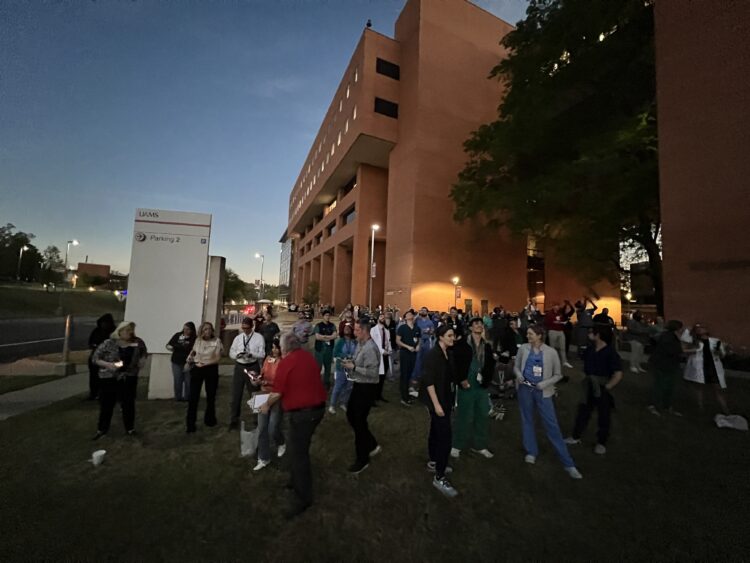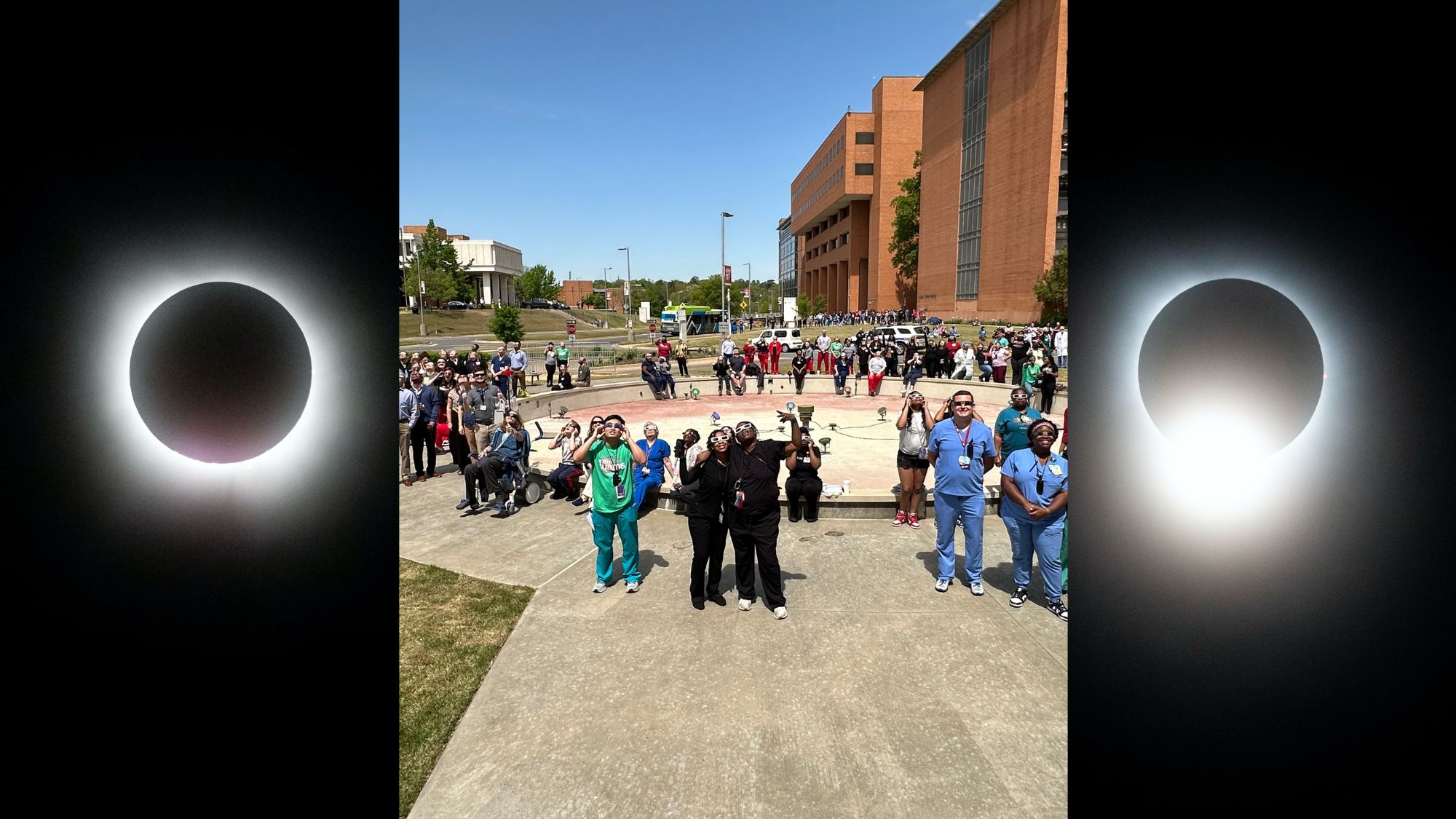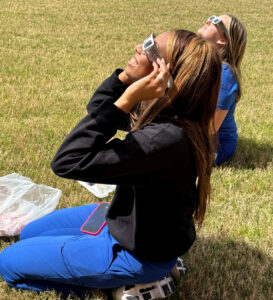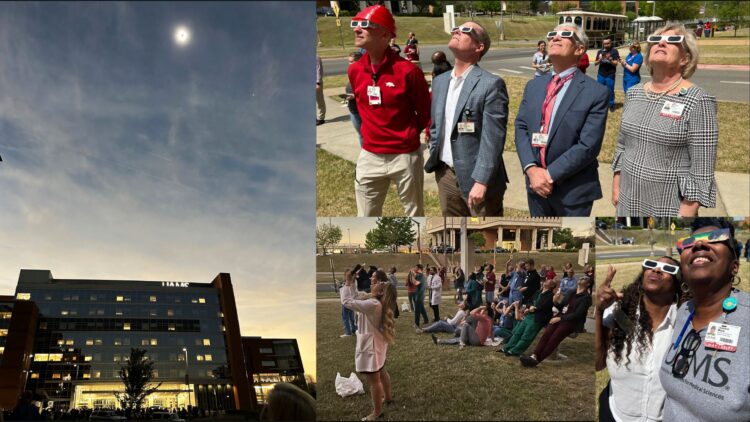UAMS Celebrates Once in a Generation Event — Total Solar Eclipse
| As the moon completely covered the disk of the sun for three minutes on April 8, hundreds of members of Team UAMS together witnessed the rare event — a total solar eclipse.
Audible gasps and exclamations of awe were heard across the field between the Shorey Building and Hooper Drive and around the Bruce Fountain as a halo of light surrounded the darkened sun, punctuated at its rim here and there by red solar flares.
Members of the university’s executive leadership, including Chancellor Cam Patterson, M.D., MBA, joined nurses, physicians and other UAMS employees as they began gathering at 12:30 p.m. and watching the sky until the total eclipse became a partial eclipse again at 1:55 p.m. By a little after 3 p.m., the moon had moved away entirely to again reveal the full disk of the sun.
Wearing a red, tiered plastic hat styled after those worn by the band Devo in the 1980s, Michael Manley, the chancellor’s chief of staff, was among the crowd. He recalled seeing his first solar eclipse while in second grade in a Jacksonville, Florida, elementary school.
“I believe my love for science started at that moment,” Manley said. “Much like then, the same feeling hit me last Monday. Just amazed of how nature has been doing this for millions of years. I was also awestruck by watching Team UAMS come out to be together during this time. There was a sense of joy and calm that I believe we need more of around here. And when totality hit … wow. I couldn’t have asked for a better experience or spent it with better people.”
The Office of Communications & Marketing distributed eclipse glasses branded with the Harvey & Bernice Jones Eye Institute logo, and Sayena Jabbehdari, M.D., resident physician in ophthalmology at the institute, spoke to the audience.

UAMS employees at the moment of total solar eclipse watch the sky while standing between the Shorey Building and Campus Drive.
“We won’t experience this again for another 21 years,” she said. “Seeing this amazing thing isn’t going to be possible without protecting our eyes, our vision.” (The next total solar eclipse visible from Arkansas will be in August 2045).
Jabbehdari provided advice on how to use the glasses. Comparing what sunlight can do to the human eye to how a magnifying glass can focus light to burn a piece of paper, sun rays can permanently damage the back of the eye, called the retina. This is called solar retinopathy. Another more painful condition, solar keratitis, can cause a sunburn to the cornea, which is the front of the eye.
Properly equipped and informed, what started as a couple of dozen employees swelled to a crowd of hundreds as the moment of total eclipse approached.
Megan Cockrell, an RN on F4 in the UAMS Medical Center, joined her co-worker, Ce’jae Brown, RN, to eat lunch near Shorey and wait for the moment.
“When I first heard about it, I thought ‘Oh, that’s cool,” and that’s about it. I honestly didn’t think it was a big deal and didn’t understand why there was such a big fuss on and off social media and so many people traveling great distances to the path of totality,” Cockrell said. “After watching the eclipse, I could see why so many people were so excited about the event. It truly was one of the most beautiful things I’ve ever seen. Especially for it to be something that happens naturally.”


